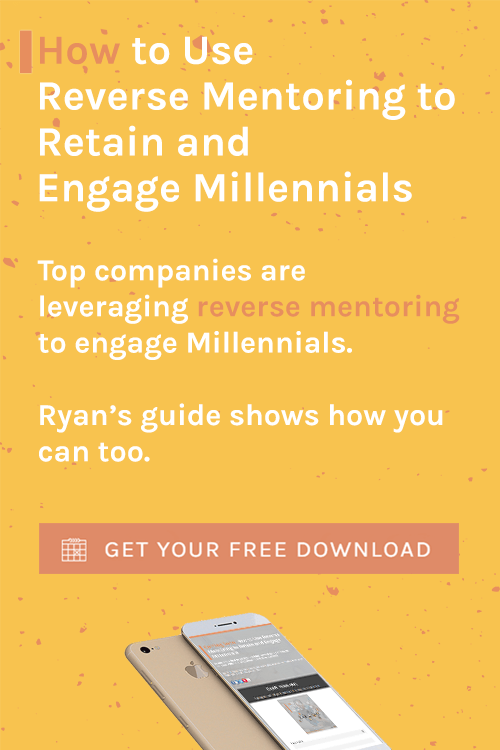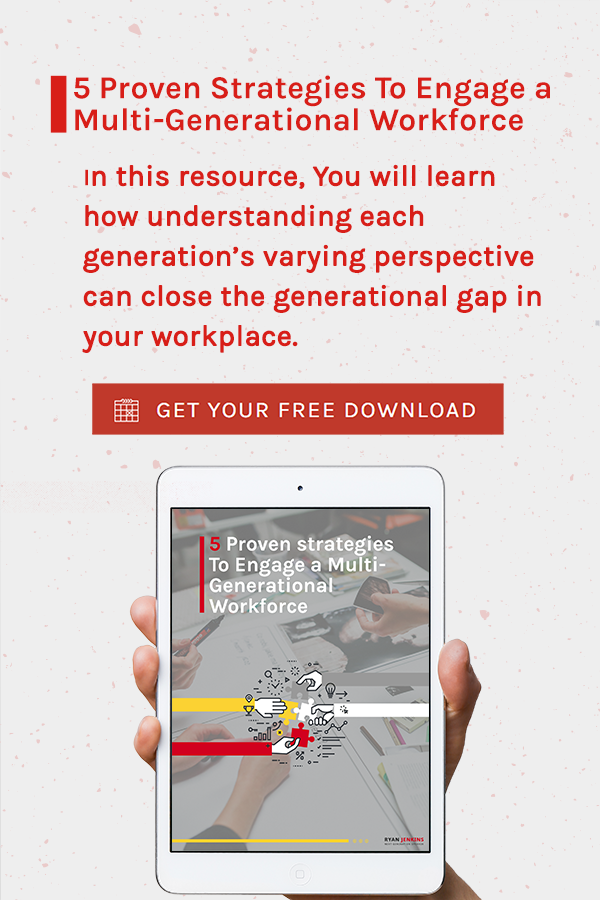Successful companies large and small use mentoring to tackle complex human resource challenges such as increasing employee retention and improving workforce productivity. Corporate mentoring is on the rise and in fact, 71% of Fortune 500 companies offer mentoring programs to their employees.
Today, smart organizations are realizing that a workplace mentoring program can serve the entire employee lifecycle. Mentoring new employees can improve new hire retention rates. Mentoring aspiring talent enables company succession plans. And reverse mentoring can ensure senior executives stay current with new business practices and technology.
Regardless of the form mentoring takes, it facilitates sharing knowledge, expertise, skills, insights, and experiences through dialogue and collaborative learning.
Because mentoring is goal oriented and promotes professional and personal growth among participants, it helps attract, motivate, develop, and retain profitable talent while increasing productivity.
Companies often want mentoring programs for the following uses:
1. Employee Career Development
To retain skilled employees and develop future leaders, it’s critical to understand employee career objectives and align them with organizational goals. Opportunity for learning and development is a top driver of engagement, and is more important than leadership, culture, and compensation (Right Management, 2012).
Mentoring enables both career development and leadership development to help employees develop new skills and feel engaged within the organization. These factors all lead to happier employees and a better retention rate for a stronger, more effective organization.
2. Leadership Development
Professional mentoring programs are an effective strategy to reward high potentials with personal attention and guidance, which leads to nurturing an organization’s leadership chain. By connecting high potentials with leaders, top performers, and each other across the company, high potentials learn faster and are ready to take on leadership positions sooner. This results in improved engagement and a faster time to productivity, while leveraging internal resources, to keep costs to a minimum.
3. Diversity Mentoring
A diverse workforce is required to stimulate innovation, cultivate creativity, and steer business strategies. Mentoring empowers a diverse range of employees to share their opinions, ideas, knowledge, and experiences on a level playing field.
Through diversity initiatives, employees learn cultural awareness to create an inclusive corporate culture and learn of their own importance to their company.
Mentoring creates an environment of trust, belonging, understanding, support, and encouragement for a diverse workforce. It gives employees an opportunity to voice their concerns, overcome hurdles, and find solutions. As a result, it inspires employees to perform to their highest ability.
4. Reverse Mentoring
Popular among companies that believe everyone has something to bring to the table, reverse mentoring partners an older, more experienced employee with a younger, less experienced newcomer.
It differs from traditional mentoring because it’s the new employee who serves as the mentor, providing senior members of the organization with up-to-date information on the latest business technologies and workplace trends.
Reverse mentoring is generally a two-way street, with a partnership that provides the younger employee with a chance to see the larger picture as well as macro-level management issues.
Because many Millennials are unsure of what they can bring to the table and their future career options, reverse mentoring can be an excellent way to continually engage them within the organization.
Reverse mentoring also provides senior executives with the satisfaction of sharing knowledge with a different generation, increasing multi-generational engagement and reducing conflicts throughout the organization.
Related Read: Reverse Your Stagnation With Reverse Mentoring
5. Knowledge Transfer
Helping employees acquire necessary knowledge, skills, and expertise is essential for any organization. Mentoring is an effective approach to organize, create, capture, and distribute knowledge. It supports short- and longer-term situational as well as topical learning between individuals and groups. It also reduces the time required for knowledge transfer by providing direct access to a range of experts and peers who can share the required knowledge and skills in an environment that promotes rapid learning.
In addition, knowledge transfer fuels succession planning, ensuring that once executives retire, someone with plenty of company knowledge will be ready to step into place.
Conclusion
In today’s volatile business world, it’s extremely important for organizations to engage employees both intellectually and emotionally. Through mentoring, employees identify themselves as a vital part of the organization while creating a heightened level of ownership. By improving employee engagement and retention along with other company initiatives, mentoring helps the company’s bottom line while also ensuring that employees feel committed to accomplishing their work in accordance to the vision of the organization.
Question: How have you benefited from mentorship?
This post was originally posted on Chronus and has been republished with approval.






